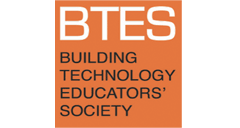Water and Land in Flux: Pedagogy for Design Innovations that Inhabit Water
Author ORCID Identifier
DOI
https://doi.org/10.7275/yy86-8t98
Abstract
The Float’n’rise Design Studio encourages a paradigm shift in design by speculating how a partially submerged building can be designed along the Southern Louisiana coast. As the erosion and submersion of terra firma continues, what might the future of a community’s existence look like? If the fact that once-inhabitable ground slowly submerges is assumed, why not construct buildings designed to float on water in the first place? Instead of holding firm to past ground/water conditions, and only raising buildings according to the hundred-year flood level principle, why not embrace a relationship with water as a new design opportunity? Located at the intersection of architecture, ecology, and advanced technology, this studio is a step forward in navigating the fraught/complex relationship between terra-firma/aqua-firma and its environmental settings, using advanced computational and fabrication techniques to rethink modes of habitation in the coastal areas of Southern Louisiana.
This paper first provides an overview of the environmental conditions of the Southern Louisiana region in general and New Orleans in particular. Then, a review of the existing research and practice in the field of floating architecture is presented. Next, the specifics of the Float’n’rise Design Studio are introduced, followed by an overview of the CAD/CAM techniques employed throughout the process. Finally, students’ projects are presented with a discussion of how they aligned with the pedagogical goals.
Employing CAD/CAM methods was found to be an inspiring source for design thinking that offers innovative design solutions to multi-faceted complex problems. It can also act as an aid in prototyping and to verify the feasibility of proposed design scenarios. In fact, an interesting improvement to the studio, if repeated, will involve using CAD/CAM techniques paired with material explorations to fabricate small-scale prototypes that can actually be tested on water. The iterative nature of prototyping and testing can synergize the iterative nature of design towards better contextualizing it.
Recommended Citation
Emami, Niloufar
(2019)
"Water and Land in Flux: Pedagogy for Design Innovations that Inhabit Water,"
Building Technology Educator's Society: Vol. 2019
Caryn Brause, Peggi L. Clouston, Naomi Darling (Eds.), Amherst, MA, 2019.
https://doi.org/10.7275/yy86-8t98
Available at:
https://scholarworks.umass.edu/btes/vol2019/iss1/33

